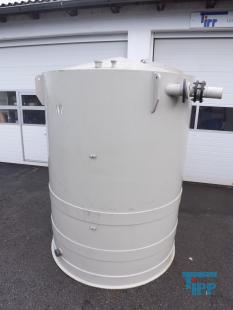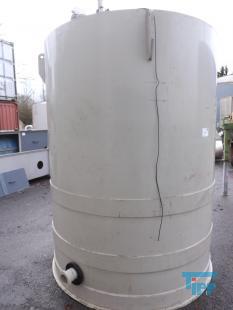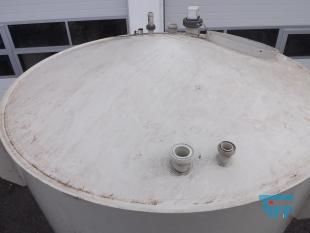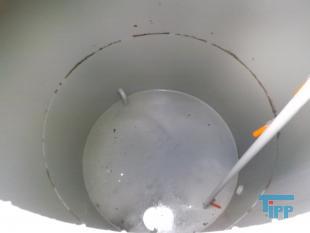tank
details to article: 26257
HINWEIS: Dieser Artikel wurde bereits verkauft.Klicken Sie hier um ähnliche Artikel anzuzeigen.
| Year of manufacture: | unbekannt |
| Pieces: | 1 |
| Condition: | gebraucht / used / second hand |
informations about: storage tanks A storage tank is a container, usually for holding liquids, sometimes for compressed gases (gas tank). The term can be used for reservoirs (artificial lakes and ponds), and for manufactured containers. The usage of the word tank for reservoirs is common or universal in Indian English, American English and moderately common in British English. In other countries, the term tends to refer only to artificial containers. In the USA, storage tanks operate under no (or very little) pressure, distinguishing them from pressure vessels. Storage tanks are often cylindrical in shape, perpendicular to the ground with flat bottoms, and a fixed or floating roof. There are usually many environmental regulations applied to the design and operation of storage tanks, often depending on the nature of the fluid contained within. Aboveground storage tanks (AST) differ from underground (UST) storage tanks in the kinds of regulations that are applied. Reservoirs can be covered, in which case they may be called covered or underground storage tanks or reservoirs. Covered water tanks are common in urban areas. Storage tanks are available in many shapes: vertical and horizontal cylindrical; open top and closed top; flat bottom, cone bottom, slope bottom and dish bottom. Large tanks tend to be vertical cylindrical, or to have rounded corners transition from vertical side wall to bottom profile, to easier withstand hydraulic hydrostatically induced pressure of contained liquid. Most container tanks for handling liquids during transportation are designed to handle varying degrees of pressure. A large storage tank is sometimes mounted on a lorry (Truck) or on an articulated lorry trailer, which is then called a tanker. Since most liquids can spill, evaporate, or seep through even the smallest opening, special consideration must made for their safe and secure handling. This usually involves building a bunding, or containment dike, around the tank, so that any leakage may be safely contained. Some storage tanks need a floating roof in addition to or in lieu of the fixed roof and structure. This floating roof rises and falls with the liquid level inside the tank, thereby decreasing the vapor space above the liquid level. Floating roofs are considered a safety requirement as well as a pollution prevention measure for many industries including petroleum refining. In the United States, metal tanks in contact with soil and containing petroleum products must be protected from corrosion to prevent escape of the product into the environment. The two most effective and common corrosion control techniques for steel in contact with soil is a coating system with cathodic protection. While steel and concrete remain one of the most popular choices for tanks, GRP and thermoplastic, polyethylene and fiberglass tanks are increasing in popularity. They offer lower build costs and greater chemical resistance, especially for storage of speciality chemicals. There are several relevant standards, such as British Standard 4994 (1989), DVS (German Welding Institute) 2205, and ASME (American Society of Mechanical Engineers) RTP-1 which give advice on wall thickness, quality control procedures, testing procedures, accreditation, fabrication and design criteria of final product. From Wikipedia, the free encyclopedia | ||||||||||||||||||
| email: mail@tipp-international.de | ||||||||||||||||||
| Internet: www.tipp-international.de | ||||||||||||||||||















